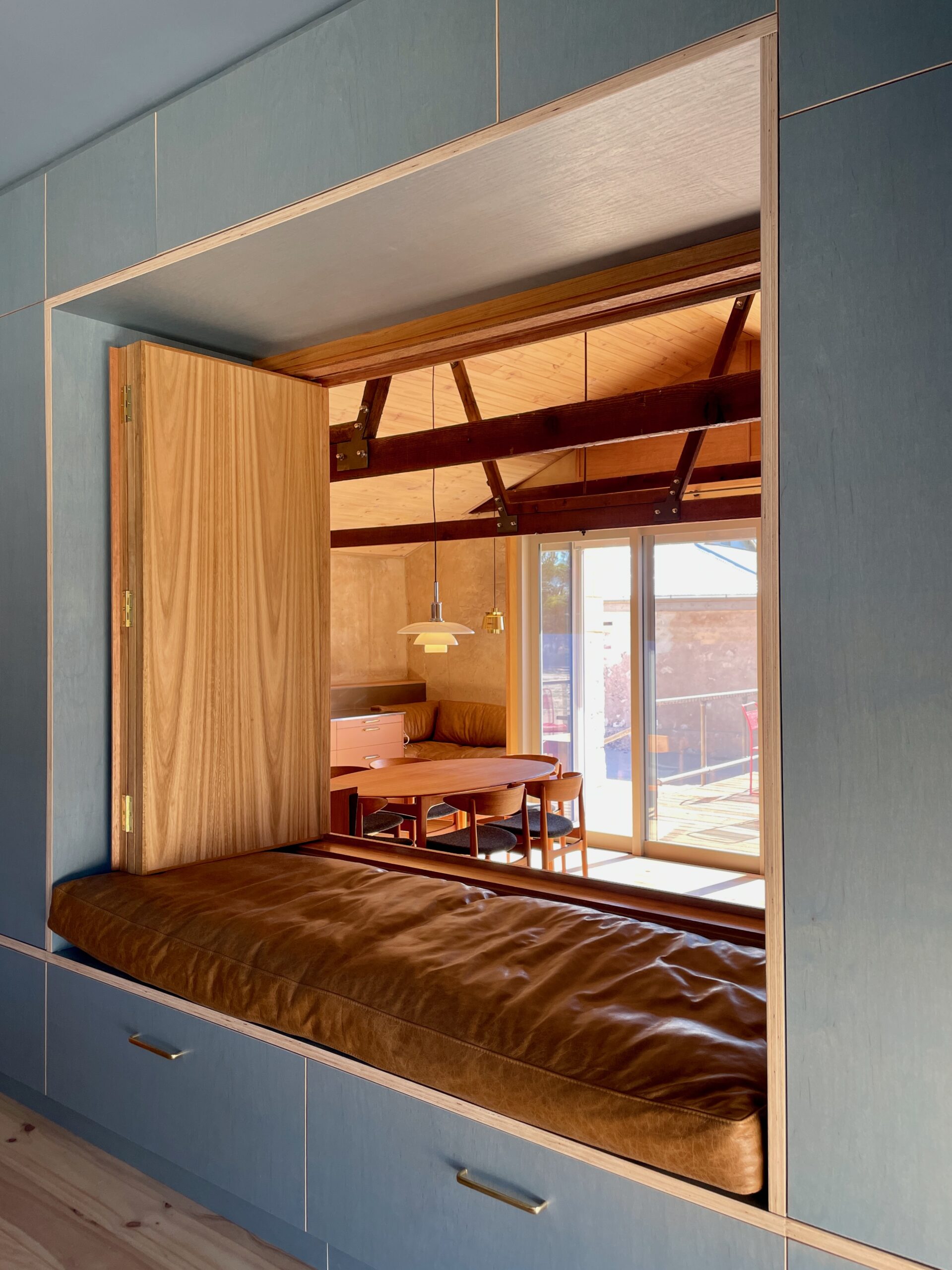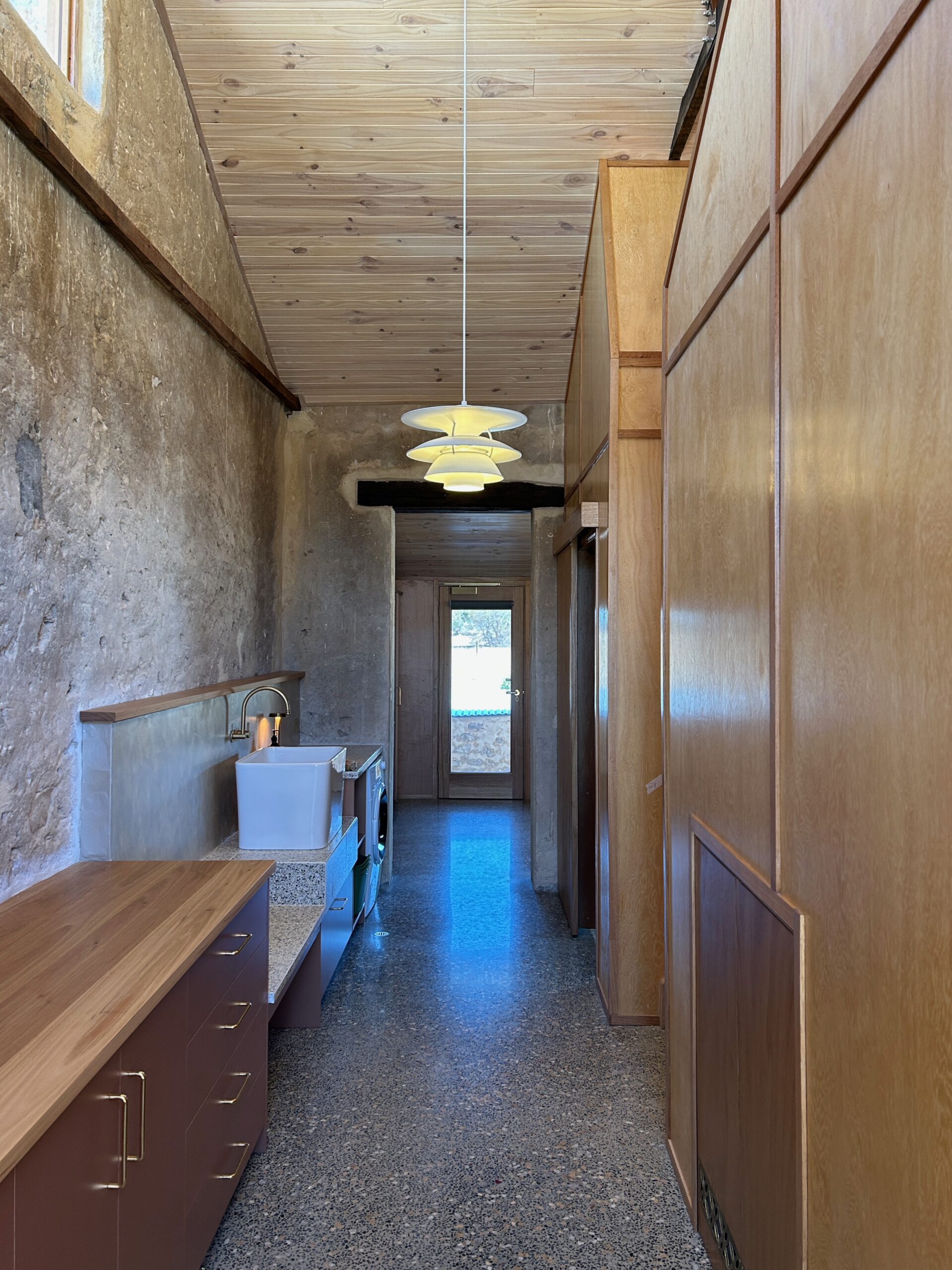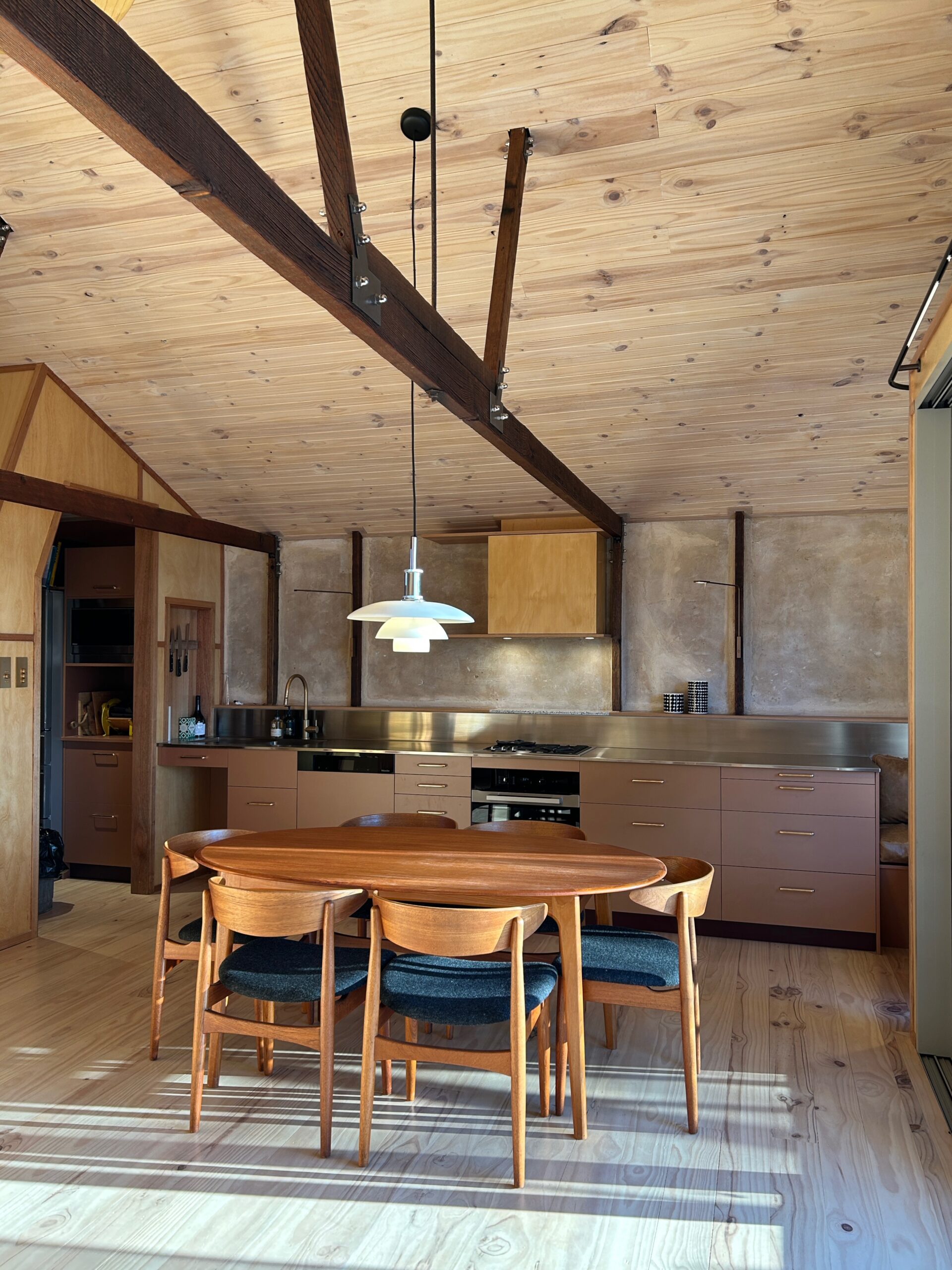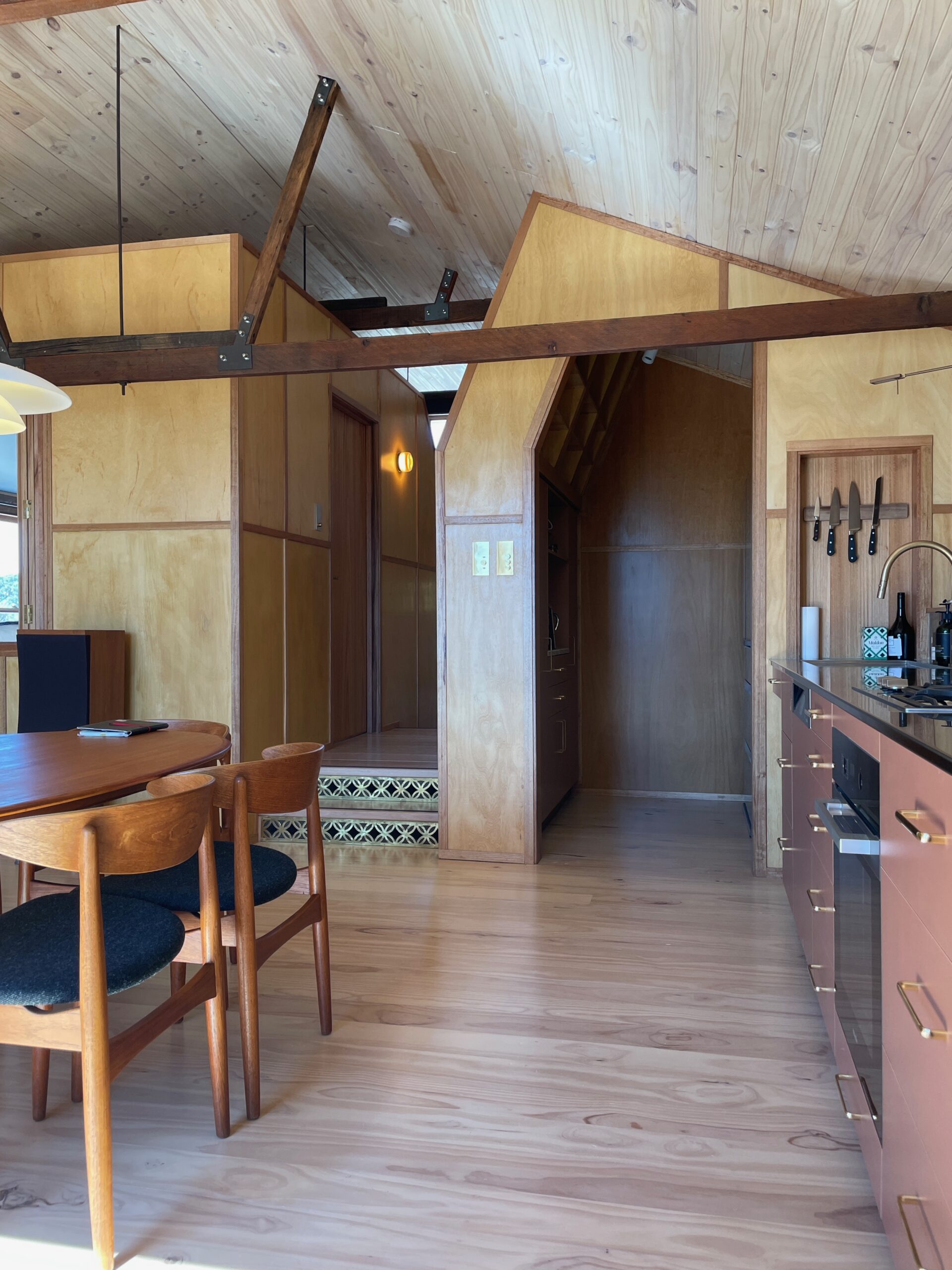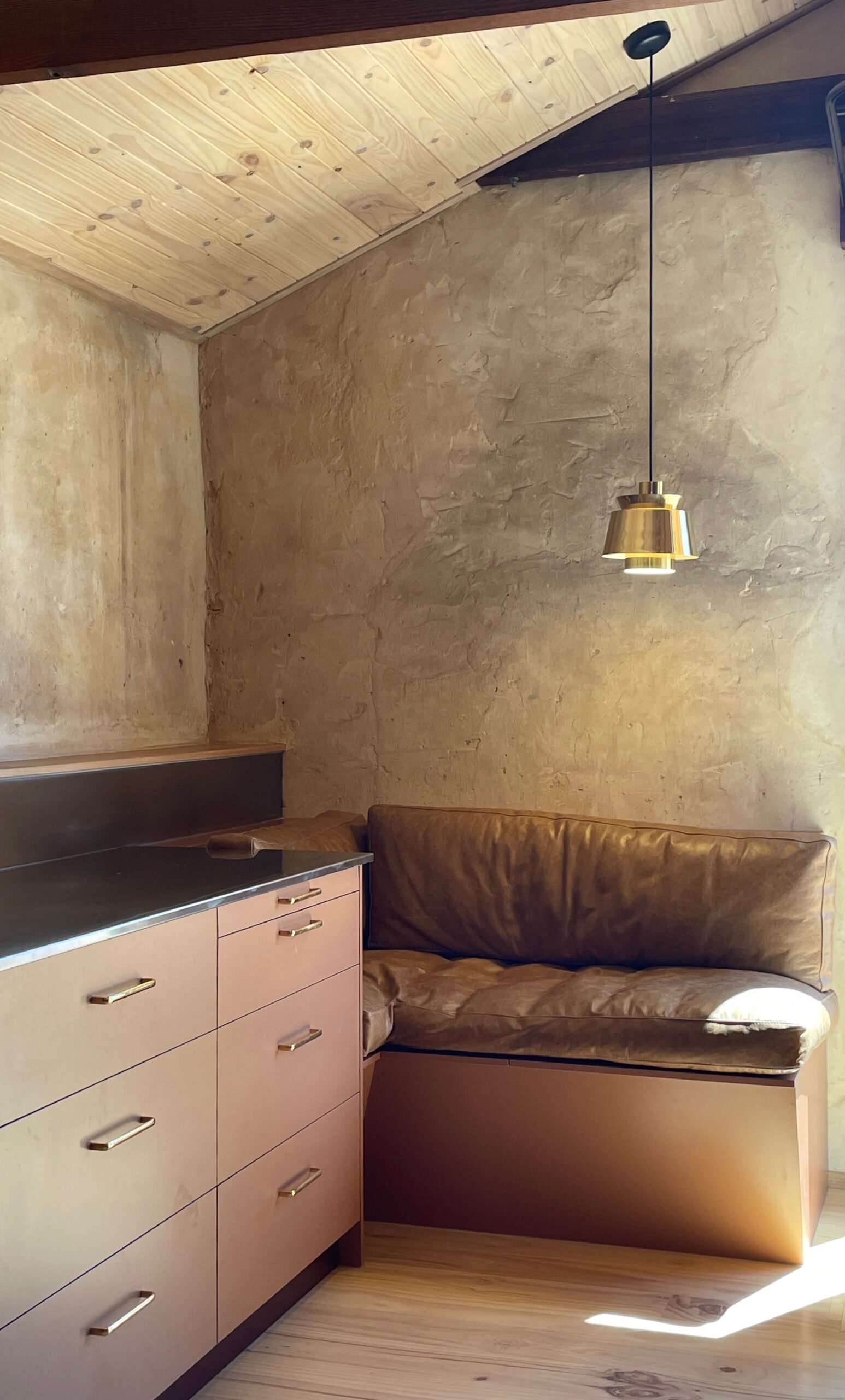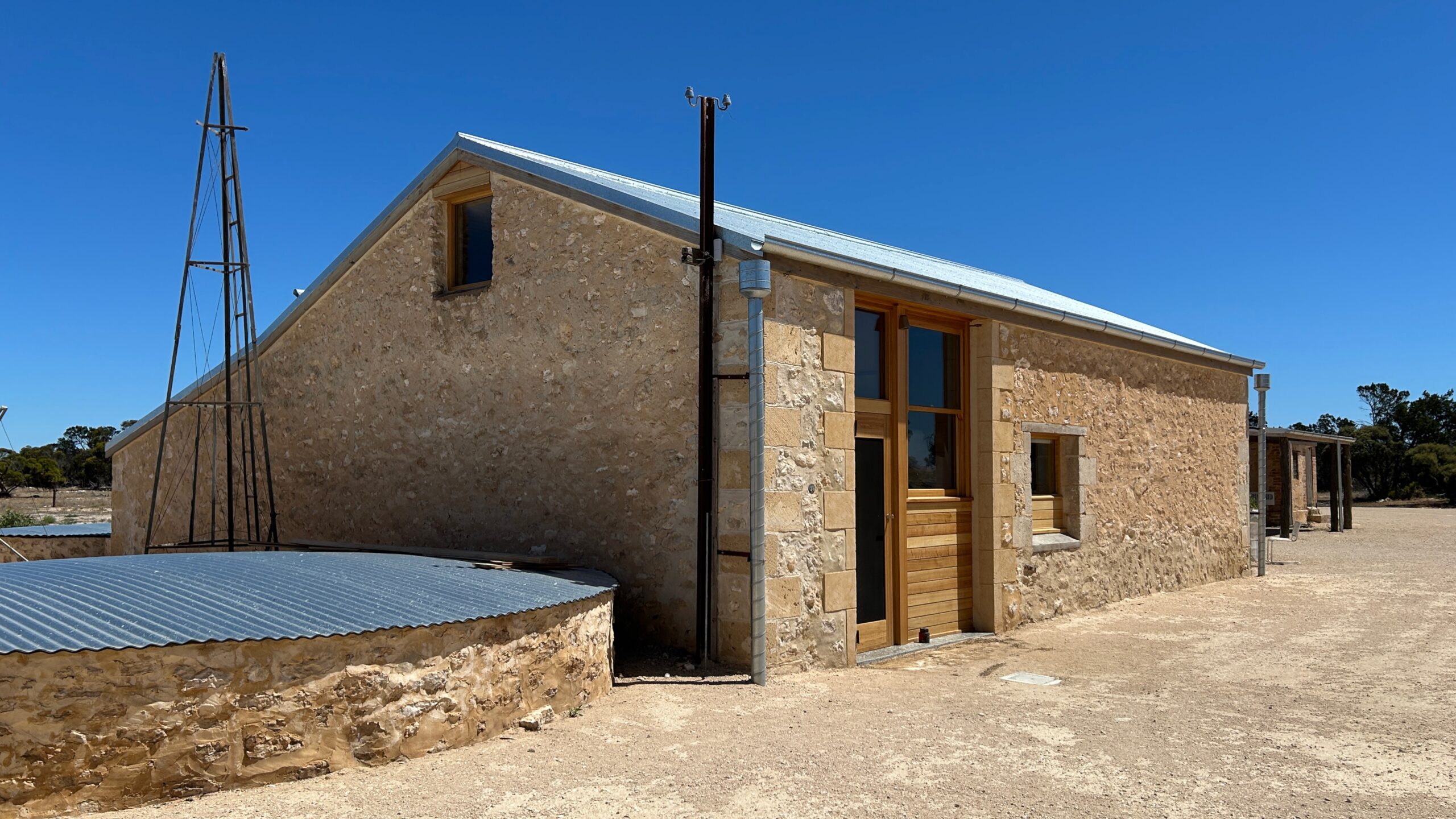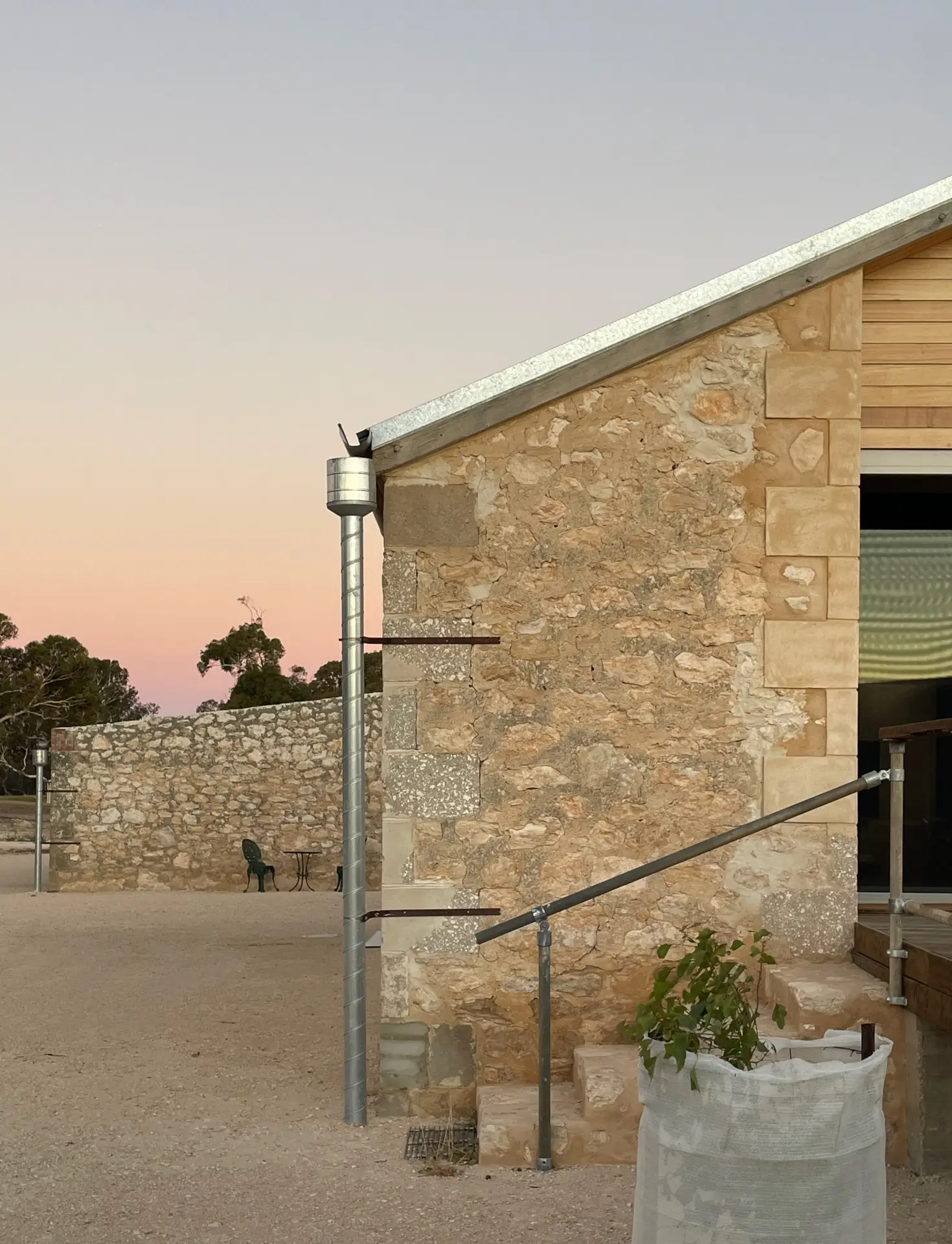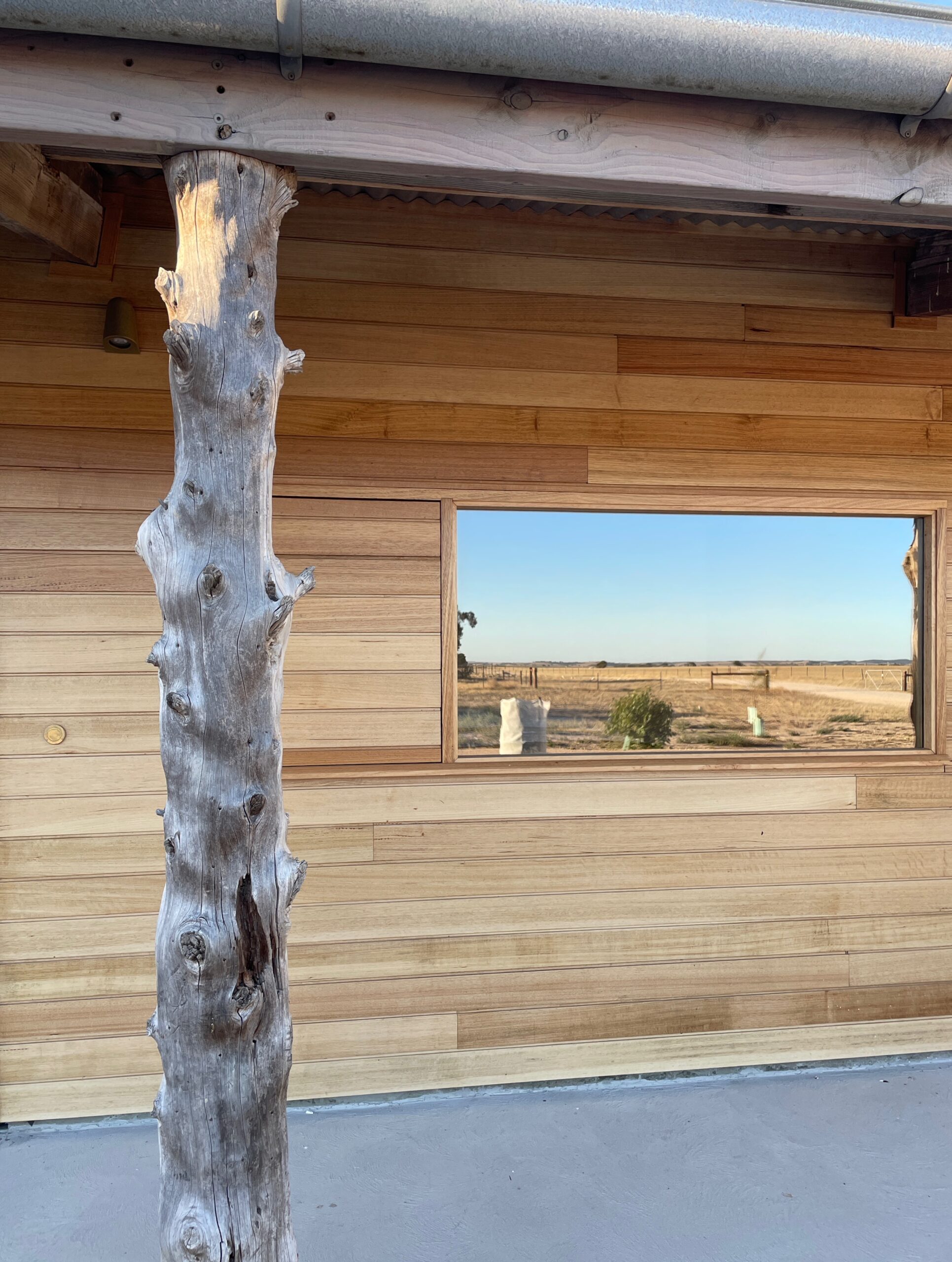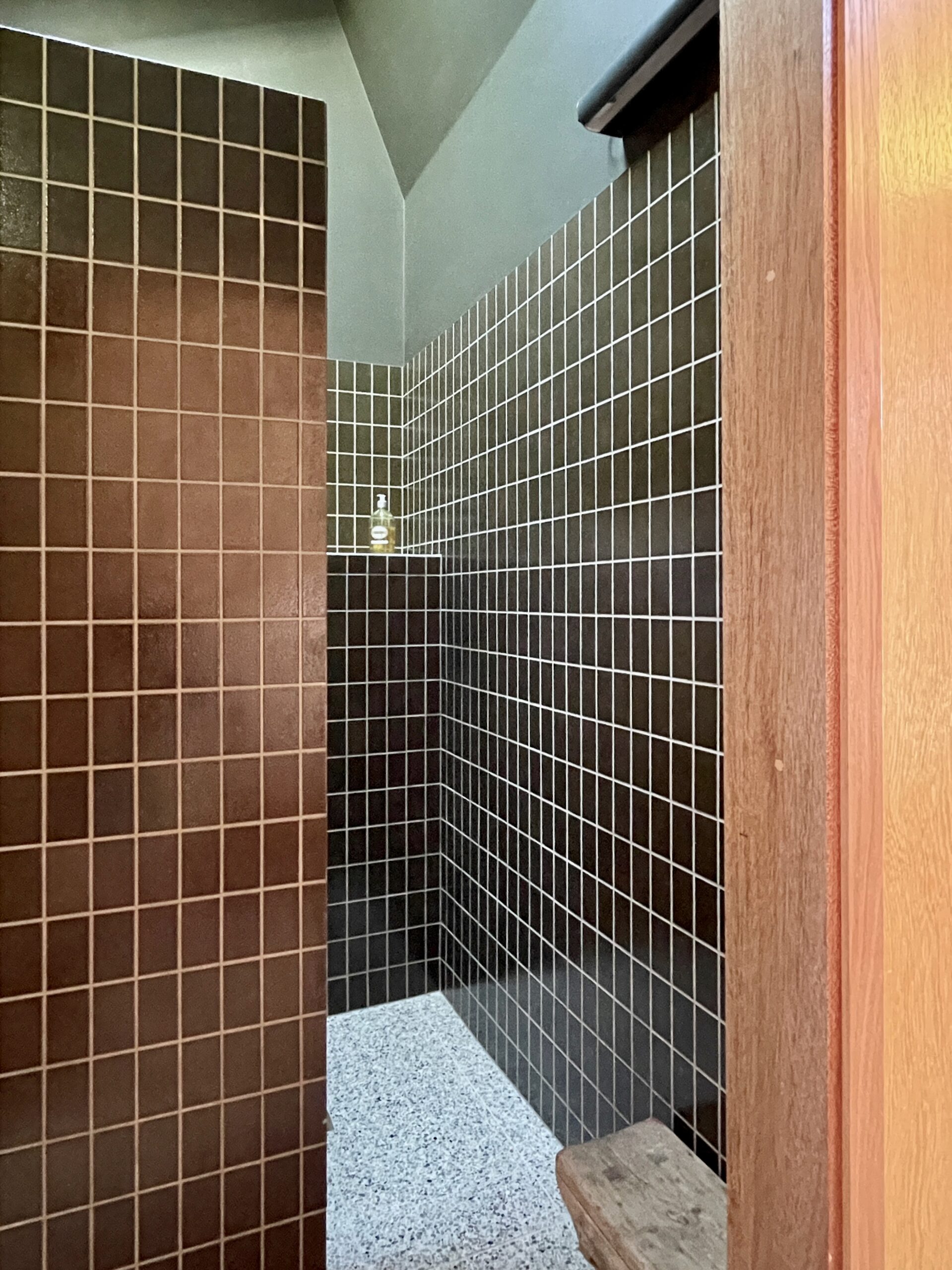The Stopover | Taylor Buchtmann Architecture
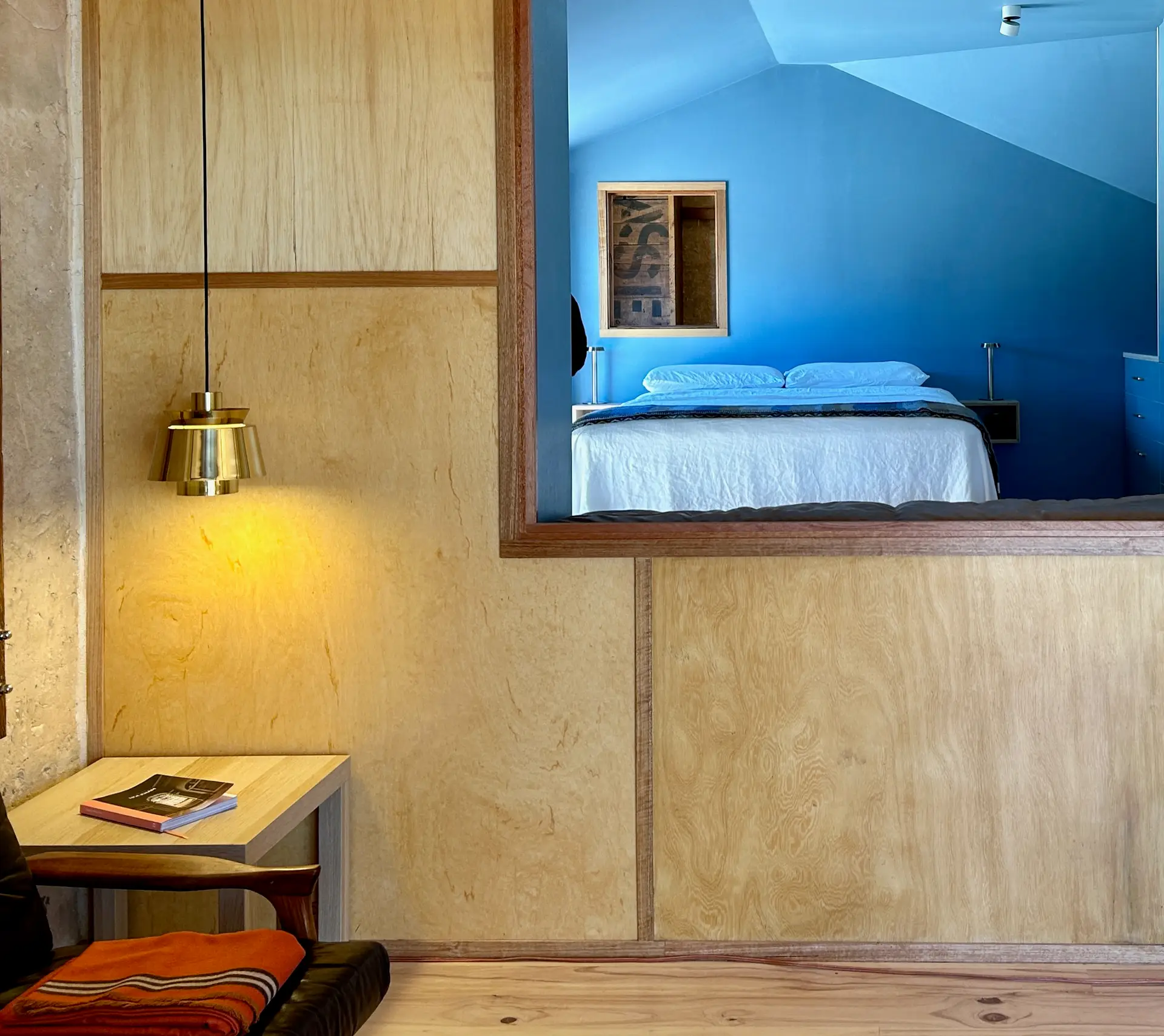
2025 National Architecture Awards Program
The Stopover | Taylor Buchtmann Architecture
Traditional Land Owners
Ngarrindjeri
Year
Chapter
South Australia
Category
Sustainable Architecture
Builder
Photographer
Media summary
The Stopover was a dilapidated former grain store, now adapted into overflow accommodation. It provides respite from the environment, whilst also framing it, taking into consideration the unique situation of farmers living where they work.
The original materials are balanced with contemporary patching, insertions, and overlay. The life of the building is extended by its new use.
All existing openings were retained, with a single new opening required. A pair of timber clad faceted capsules were inserted and an existing verandah partially infilled. External detailing is particularly robust in response to nearby buildings, and the challenging environment.
The interiors of the capsules were developed as smaller boxes within the larger grain storage volume, and evolved to be ‘lined’ inner spaces continuing the relationship between the existing fabric and the new with greater intensity.
At its heart The Stopover is a small controlled environment in a large and largely uncontrollable landscape.
2025 National Awards Received
2025
South Australia Architecture Awards
South Australia Jury Citation
This former grain store has been coaxed back into life to become accommodation for seasonal farm workers as well as visiting friends and family. It also provides potential for generational change, providing a home for the current owners when the next generation occupies the homestead.
The reuse of materials, such as timber panelling and brass handrails from neighbouring buildings, has been carefully orchestrated. They have been combined with thoughtfully selected new materials that are largely self-finished and of limited reflectivity in recognition of the high glare experienced outdoors. The overall material palette respects the original but shows generational change.
The architects have carefully considered the existing building, minimising structural changes to one new external opening. The controlled windows and darker interior draw the eye to framed views and provide a feeling of spaciousness, while also offering protection from summer heat and cold winter nights.
At its heart, this adaptive re-use project is skilfully designed and detailed with a clear eye for craftsmanship, creating spaces that invoke curiosity, respond to the surrounding conditions, and provide a sense of community. It delivers a small, delightful and controlled environment in an expansive and largely uncontrollable landscape.
2025
South Australia Architecture Awards #2
South Australia Jury Citation #2
The Stopover by Taylor Buchtmann Architecture is a finely crafted and detailed adaptation of a derelict farm outbuilding. Located in a hostile environment prone to extreme temperatures, dust, wind, and power failures, this project sees the conversion of a stone building shell into a beautiful, welcoming respite for workers, family, and visitors.
The building responds to its environment by carefully harnessing light, ventilation, and views, whilst shielding the occupants from the extremes of the local climate. The reuse of the existing structure with minimal new footprint keeps the project’s embodied energy to a minimum. Salvaged items found and stored on the property are beautifully incorporated into the design.
This project is part of a masterplan for the site, also developed by TBA, demonstrating a long-term commitment to regeneration of the property. This includes a strategy for revegetation to improve shading and reduce soil erosion, and further adaptive reuse of existing buildings to provide facilities for the family, farm workers and the broader community.
The strong relationship between the architects and their clients is evident in small but cleverly considered and crafted details. The resulting building speaks to the power of such a relationship, and commitment to design excellence in an often-challenging environment.
Our architects provided a masterplan solution to a complex and problematic site, delivering an outcome that was bespoke and befitting to its rural environment. Their sensitive observance of re-purposing the dilapidated ruins has resulted in a central, connective hub for our agricultural team and community. Its multi-purpose nature provides scope for large scale functions or intimate gatherings, all with layered details, joyful discoveries, and insightful offerings. Their design honours its humble past but encourages a new future. Our architect’s attention to detail and perseverance to cause is showcased in this project.
Client perspective
